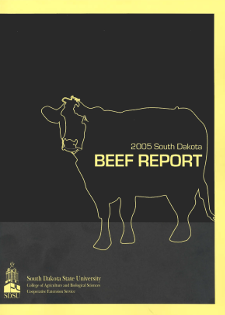Document Type
Report
Report Number
2005-21
Publication Date
2005
Keywords
interseeding, sod suppression, legume, effectiveness, cost, management
Summary
Sod suppression is necessary for successful establishment of legumes interseeded into existing pasture; however such techniques vary in their effectiveness, cost, and management. Sod suppression experiments for legume interseeding into cool-season pasture were conducted at South Dakota State University’s Cow-Calf Unit located near Brookings, SD in 2003 to 2005. We evaluated (i) spring burn, (ii) field cultivator or disk, (iii) herbicide, (iv) heavy fall and spring graze, and (v) a control with no sod suppression. Legume species were alfalfa, birdsfoot trefoil, and kura clover. Sod suppression techniques enhanced the success of legume interseeding. In this study, the grazing equaled or was better than herbicide as a sod suppression technique. Field cultivating, disking or spring burning did not enhance the success of legume establishment. Alfalfa had a greater establishment in the drier year of 2003. Birdsfoot trefoil had greater establishment in the wetter year of 2004. Kura clover was not successful in establishment. Costs of sod suppression techniques varied from $0 per acre (grazing) to $13.30 per acre (herbicide). Management of sod suppression techniques is important to provide a long enough window for legumes to establish with minimal competition from existing grass. Managers can choose the sod suppression technique and legume that fits their resources, skills, and comfort level to achieve successful legume interseeding.
Number of Pages
7
Format
application/pdf
Language
en
Publisher
South Dakota State University
Rights
Copyright © 2005 South Dakota State University
Recommended Citation
Smart, Alexander J.; Owens, Vance N.; and Pruitt, Dick, "Sod Suppression Techniques for Legume Interseeding" (2005). South Dakota Beef Report, 2005. 22.
https://openprairie.sdstate.edu/sd_beefreport_2005/22

